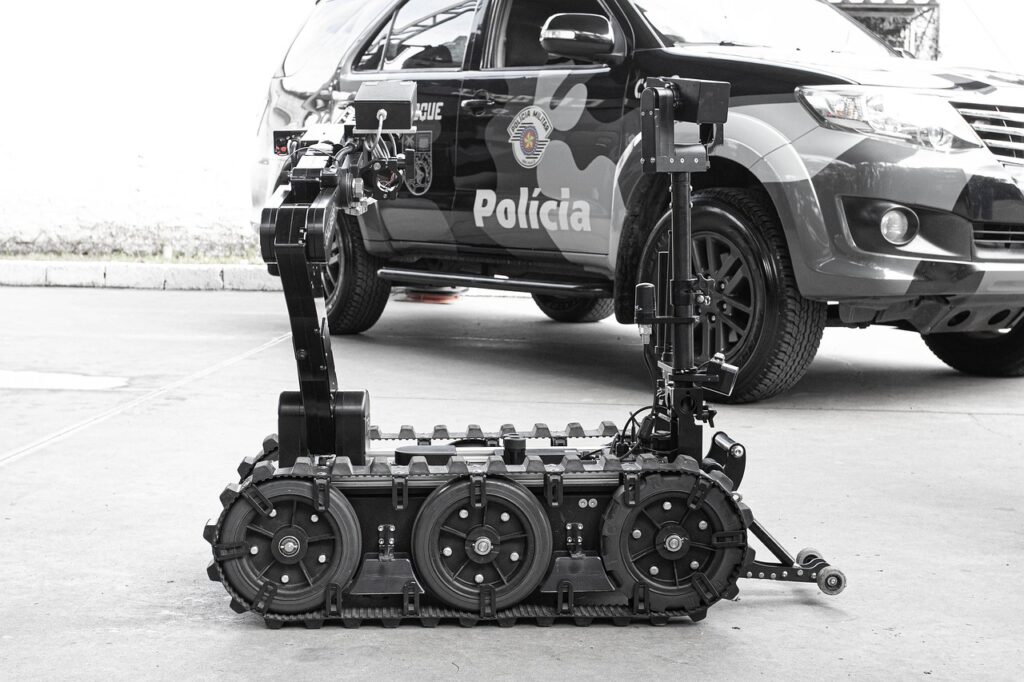Police Robots Will Now Be Able To Use Lethal Force?
This article is more than 2 years old

News about advancements in AI and robotic technologies is gaining speed. And with it, conversations about using said robots in various industries are heating up. One of those conversations has reached the San Francisco Board of Supervisors, which is considering a proposal around police robots.
The proposal under consideration with the Board of Supervisors takes robotic involvement to a new level. They are considering a policy proposal authorizing police robots to use deadly force. After some initial back and forth, the Board will vote on Tuesday.
The San Francisco Police Department (SFPD) submitted the first draft of its policy proposal following the passage of a new California law. According to the BBC, that law “requires every municipality in the state to list and define the authorized uses of all military-grade equipment in their local law enforcement agencies.” But the Board kicked the proposal back to the SFPD after board member Aaron Peskin made an interesting note.
Peskin added the following statement to the first draft: “Robots shall not be used as a Use of Force against any person.” When the SFPD submitted its revised draft, it marked out Peskin’s note with red ink. And the department added some new terminology.
The revised draft states that “robots will only be used as a deadly force option when risk of loss of life to members of the public or officers are imminent and outweigh any other force option available to the SFPD.” And this is the draft currently under review by the Board of Supervisors. If passed, it will apply to the 12 police robots the department has in use.
While the SFPD insists the proposed policy is only to protect the lives of its officers and potential suspects, others are understandably wary. The BBC spoke with Paul Scharre about the possible use of deadly force by police robots. Scharre helped draft the US policy on autonomous weapons and wrote the book Army Of None: Autonomous Weapons And The Future Of War.
He is highly skeptical about the news coming out of California. “What is concerning about SFPD’s proposal, Scharre says, is that it doesn’t seem to be well thought out. ‘Once you’ve authorized this kind of use, it can be very hard to walk that back.'”
Law and information science professor at the University of Washington, Ryan Calo, echoed that sentiment. Calo said, “We have to ask ourselves do we want to be in a society where police kill people with robots? It feels so deeply dehumanizing and militaristic.”
In general, police robots are a familiar sight for American citizens. We have all seen the footage of bomb-diffusing robots in action. And most people likely don’t have any qualms about the employment of robot tech for such a dangerous undertaking. But this is opening up a new deadly can of worms.
Indeed, the current discussion about police robots is reminiscent of a sci-fi movie. It is almost surreal. So, while we await the news out of San Francisco, it may be a good time to think about what a future with AI and humans will look like.



